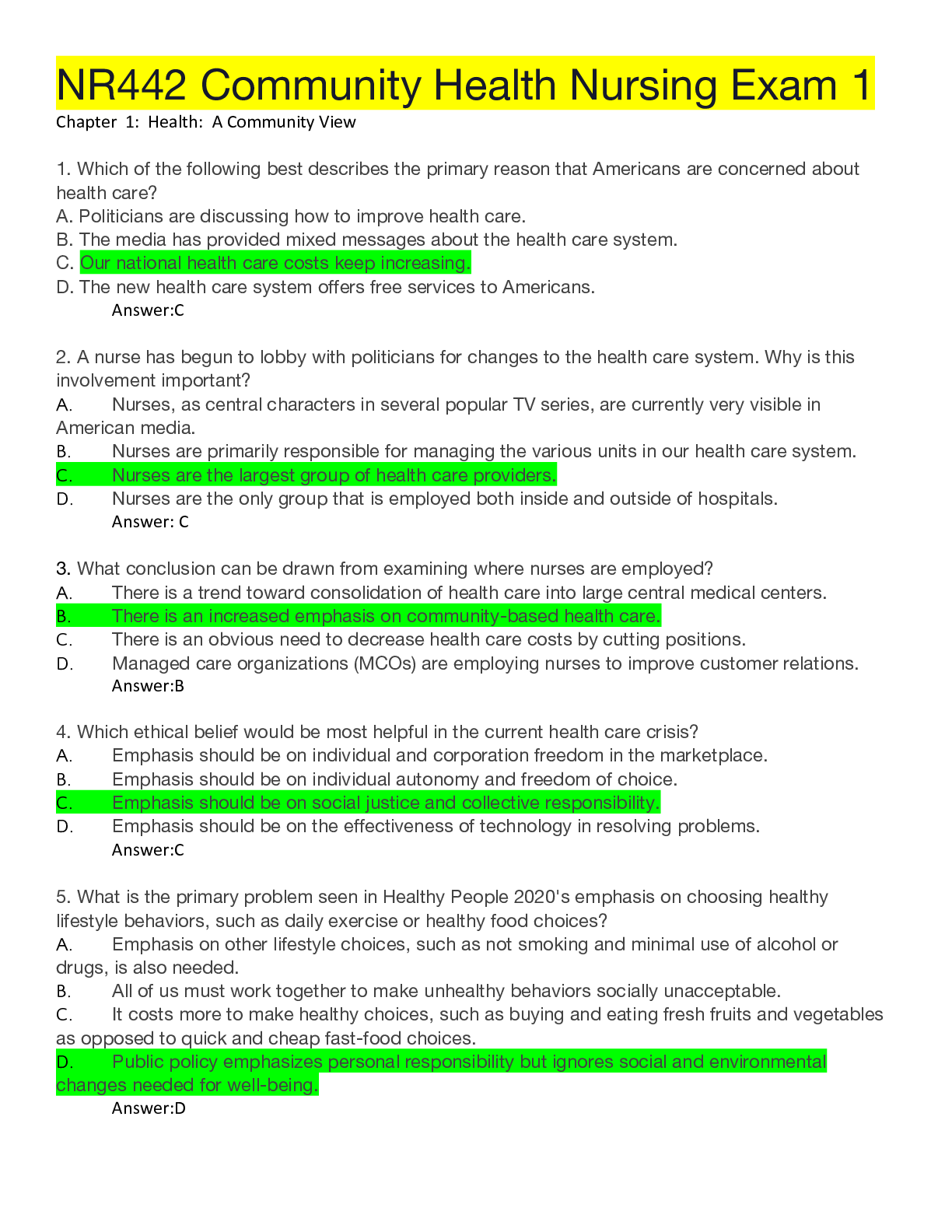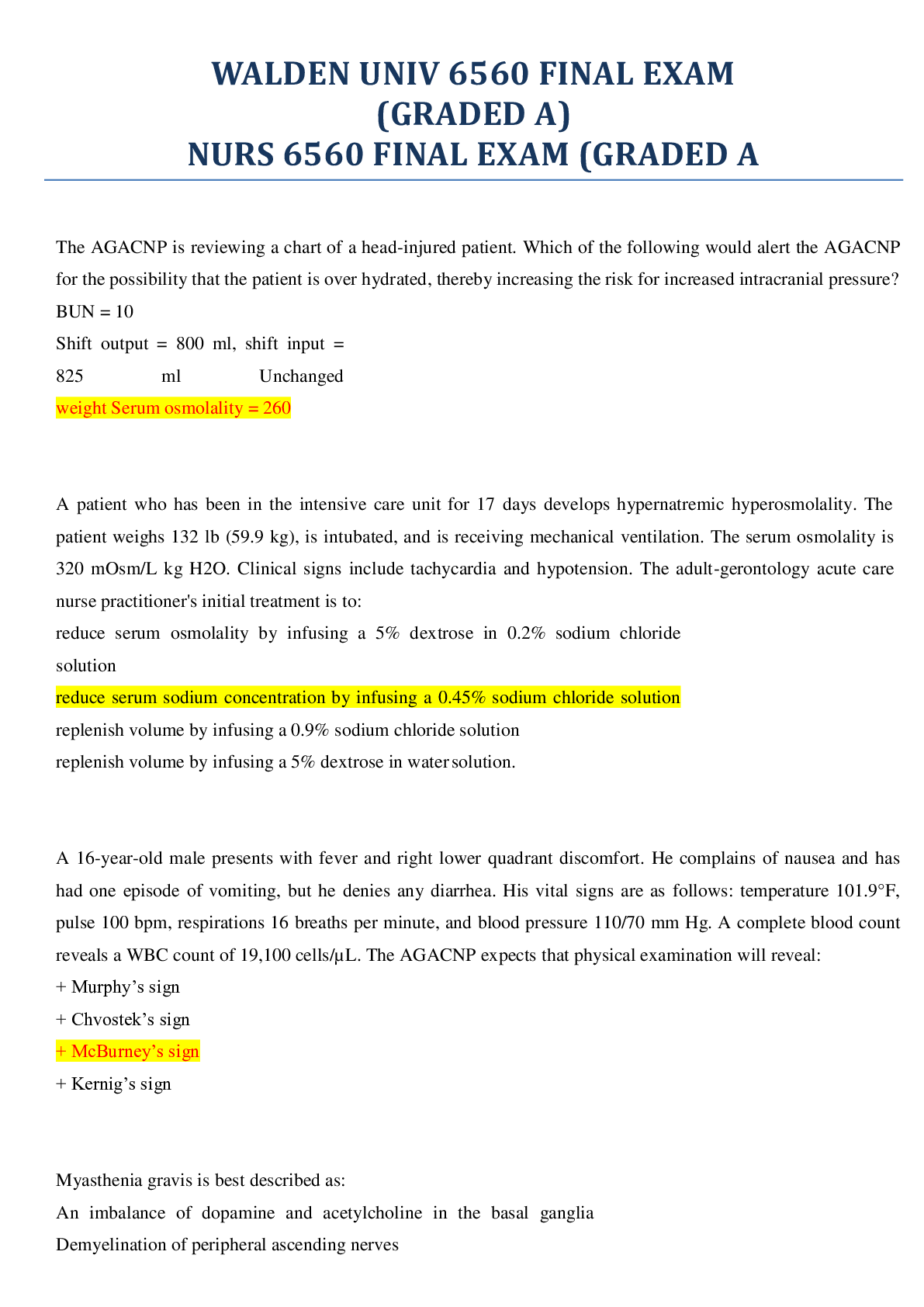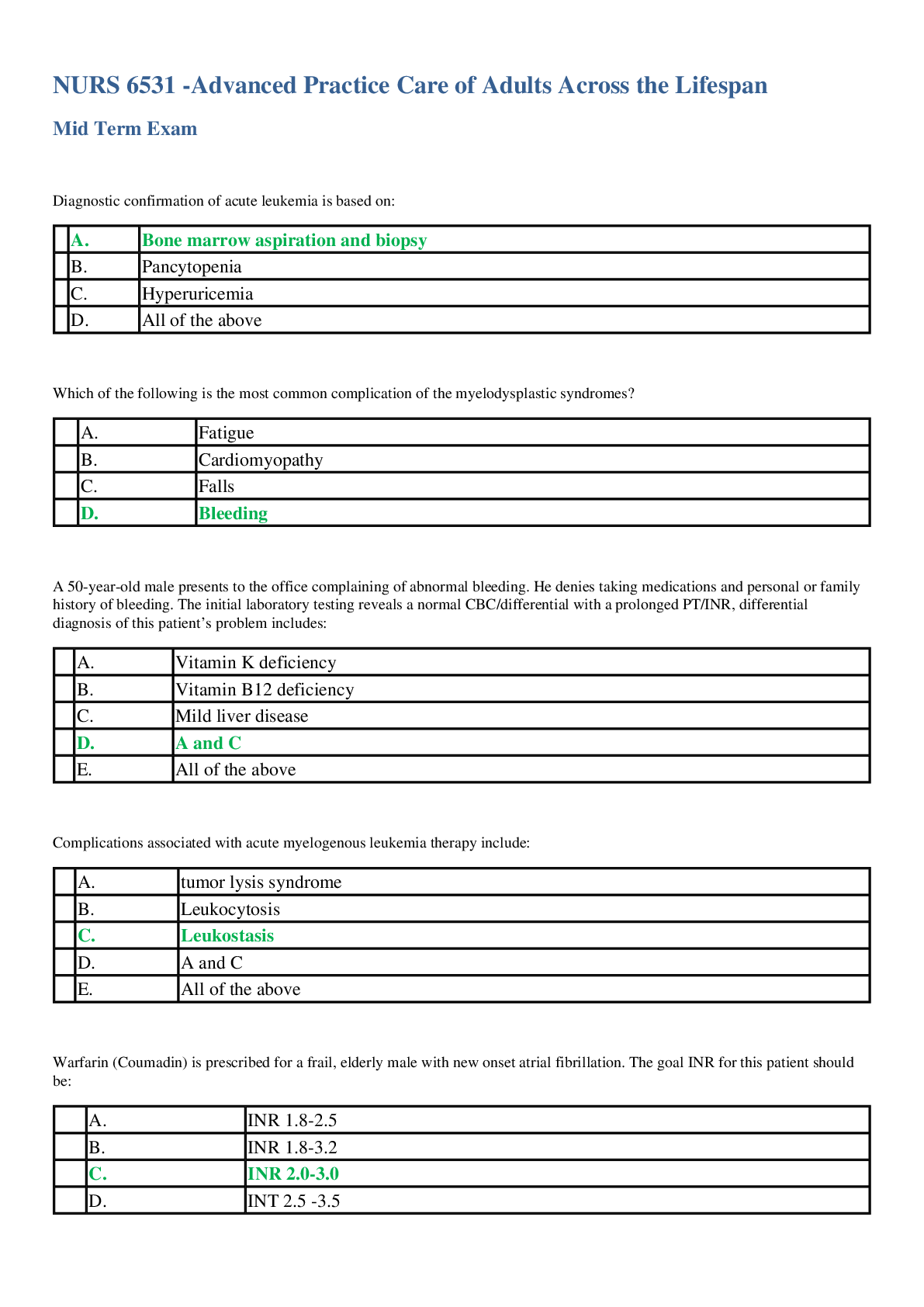*NURSING > EXAM > NURS 6531 ADVANCED PRACTICE CARE OF ADULTS Final Exam 1 - Questions with true answers - GRADED A+ (All)
NURS 6531 ADVANCED PRACTICE CARE OF ADULTS Final Exam 1 - Questions with true answers - GRADED A+
Document Content and Description Below
NURS 6531 ADVANCED PRACTICE CARE OF ADULTS Final Exam 1 - Questions with true answers - GRADED A+ Central obesity, “moon” face, and dorsocervical fat pad are associated with: A . Metabolic syn... drome B . Unilateral pheochromocytoma C . Cushing’s syndrome D . None of the above Question 3 1 out of 1 points An elderly man is started on lisinopril and hydrochlorhiazide for hypertension. Three days later, he returns to the office complaining of left great toe pain. On exam, the nurse practitioner notes an edematous, erythematous tender left great toe. The likely precipitant of this patient’s pain is: A . Trauma B . Tight shoes C . Arthritis flare D . Hydrochlorothiazide Question 4 1 out of 1 points The most effective treatment of non-infectious bursitis includes: Conservative treatment includes rest, cold and heat treatments, elevation, administration of nonsteroidal anti-inflammatory drugs (NSAIDs), bursal aspiration, and intrabursal steroid injections Question 5 1 out of 1 points What conditions must be met for you to bill “incident to” the physician, receiving 100% reimbursement from Medicare? Selected Answer: The physician must be on-site and engaged in patient care Answers: You must initiate the plan of care for the patient The physician must be on-site and engaged in patient care You must be employed as an independent contractor You must be the main health care provider who sees the patient Question 6 1 out of 1 points Which of the following is not a risk factor associated with the development of syndrome X and type 2 diabetes mellitus? The metabolic syndrome refers to the co-occurrence of several known cardiovascular risk factors, including insulin resistance, obesity, atherogenic dyslipidemia and hypertension. Question 7 1 out of 1 points Which of the following is not a common early sign of benign prostatic hyperplasia (BPH)? A. Nocturia B. Urgency incontinence C. Strong urinary stream flow D. Straining to void Question 8 1 out of 1 points Steve, age 69, has gastroesophageal reflux disease (GERD). When teaching him how to reduce his lower esophageal sphincter pressure, which substances do you recommend that he avoid? Food that is very hot or very cold Fatty or fried foods Peppermint or spearmint, including flavoring Coffee, tea, and soft drinks that contain caffeine Spicy, highly seasoned foods Fried food DT caffeine, chocolate and anticholinergics Question 9 1 out of 1 points Which drug category contains the drugs that are the first line Gold standard therapy for COPD? Beta antagonist Question 10 1 out of 1 points The most commonly recommended pharmacological treatment regimen for low back pain (LBP) is: Nsaid [Show More]
Last updated: 2 years ago
Preview 1 out of 37 pages
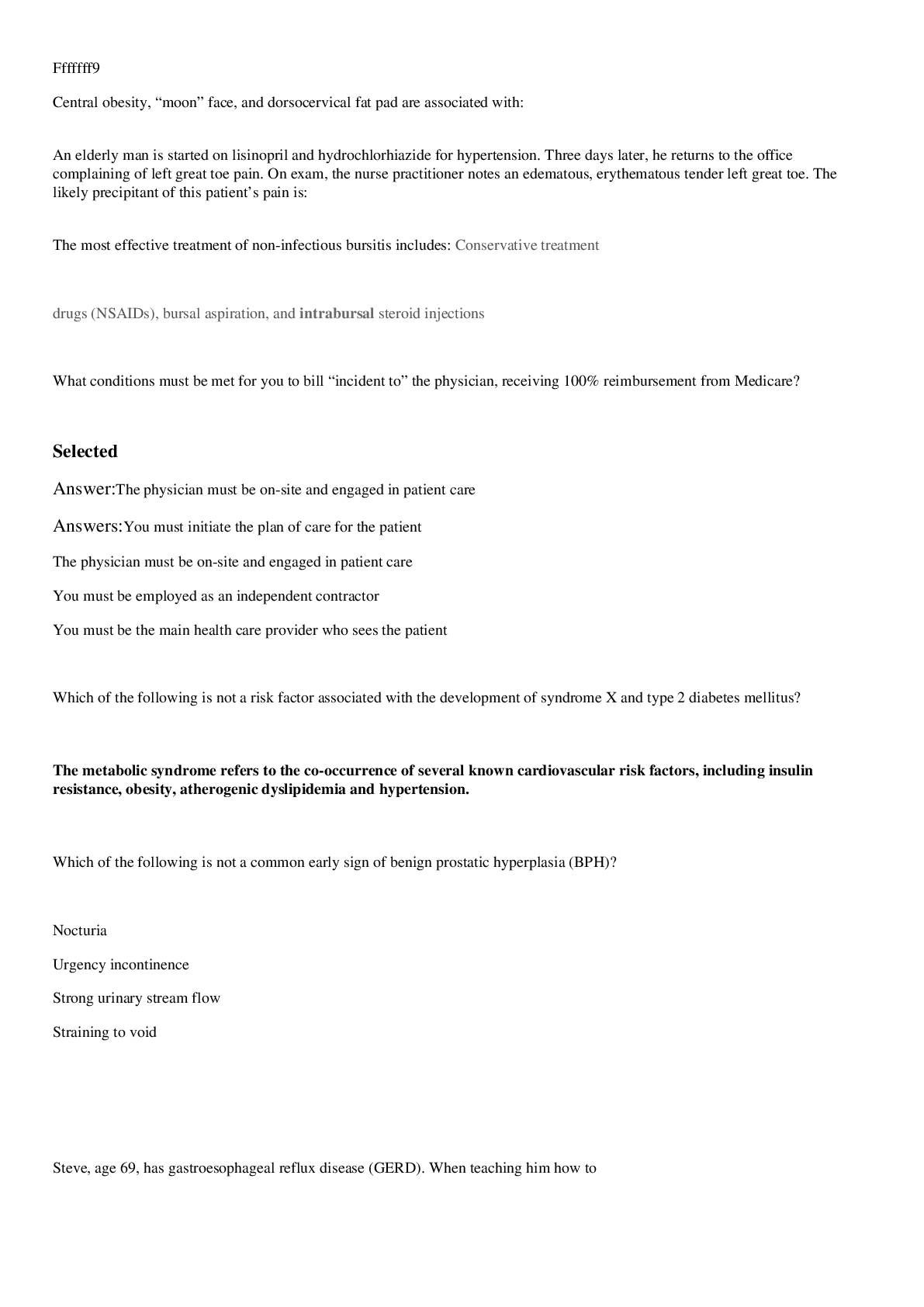
Buy this document to get the full access instantly
Instant Download Access after purchase
Buy NowInstant download
We Accept:

Reviews( 0 )
$13.00
Can't find what you want? Try our AI powered Search
Document information
Connected school, study & course
About the document
Uploaded On
Jul 12, 2021
Number of pages
37
Written in
Additional information
This document has been written for:
Uploaded
Jul 12, 2021
Downloads
0
Views
69




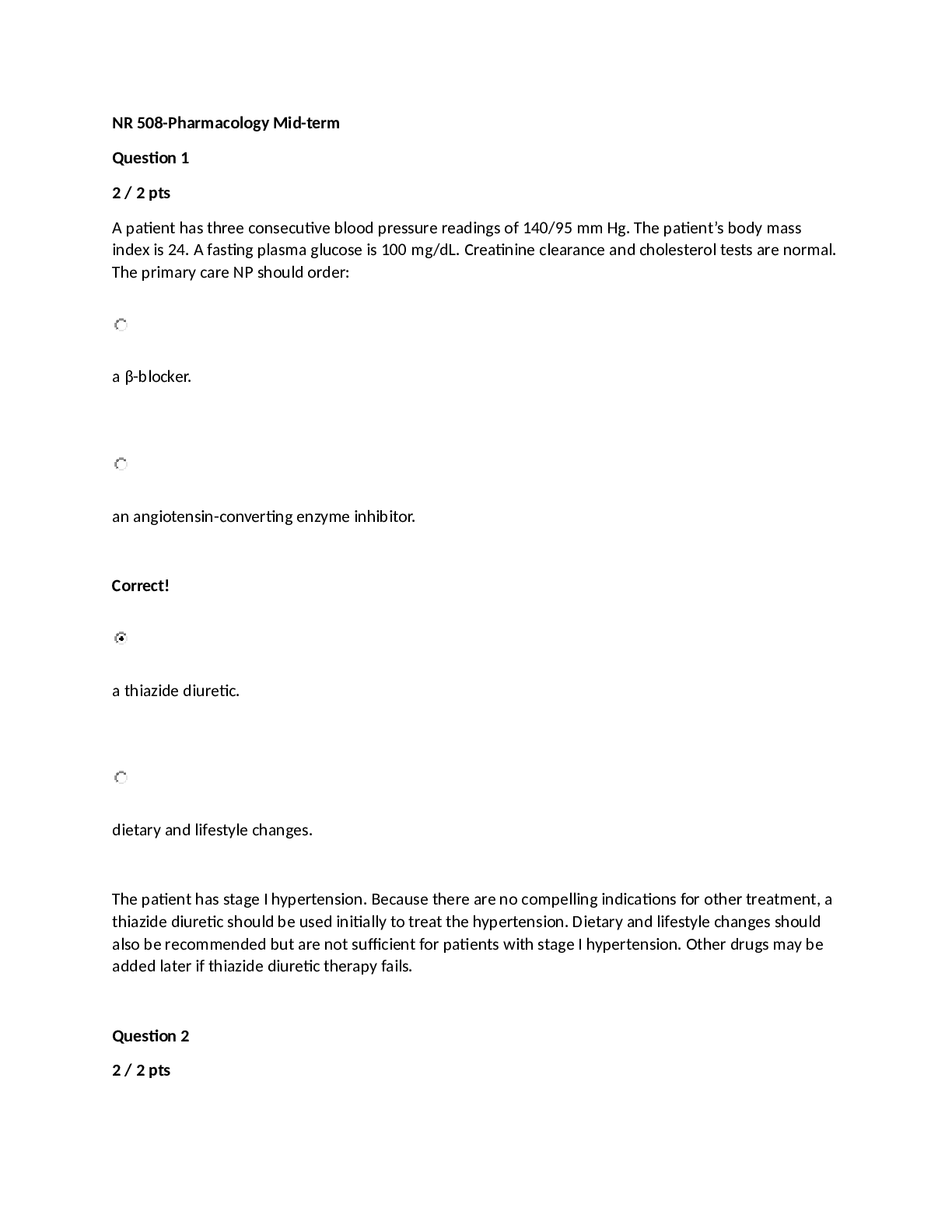



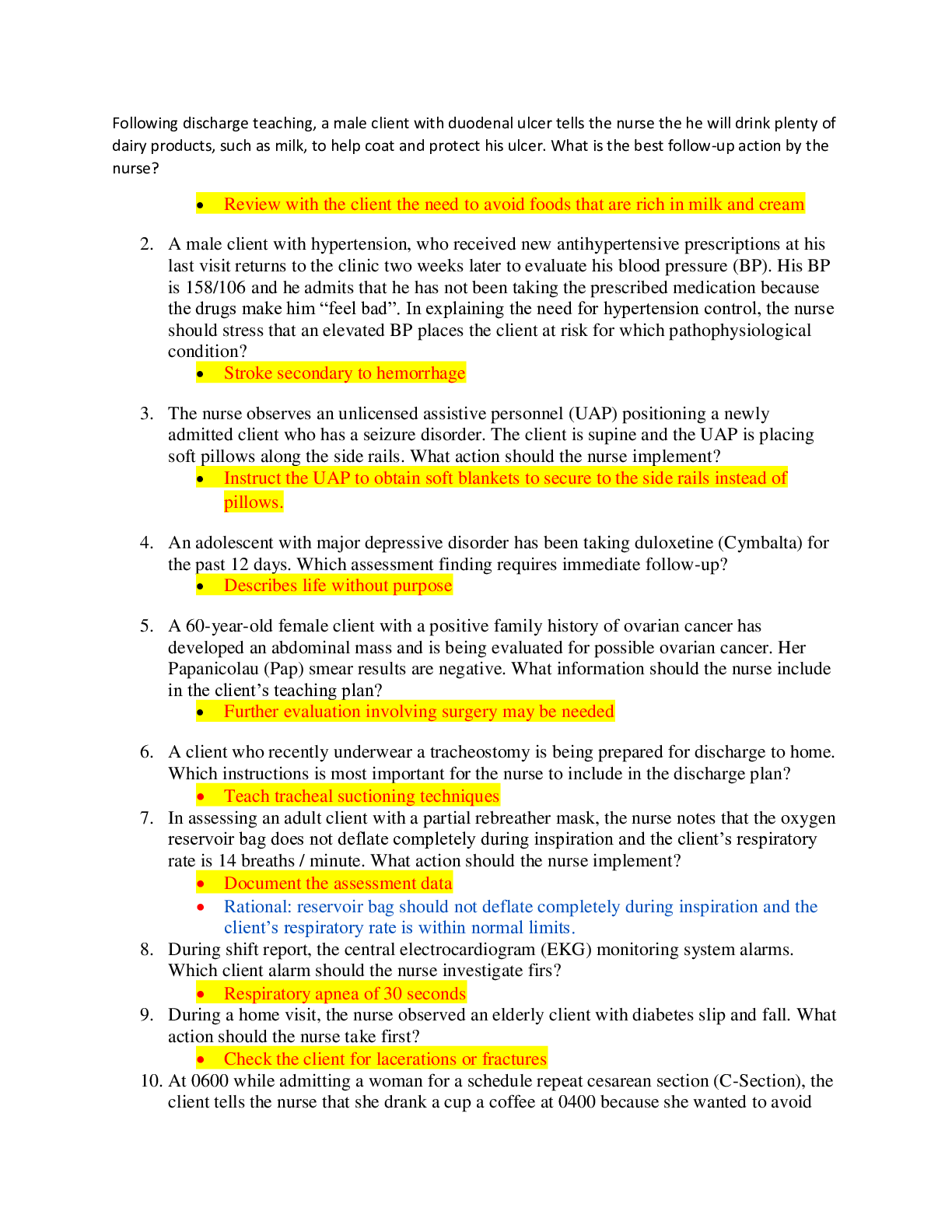


; Answered.png)



